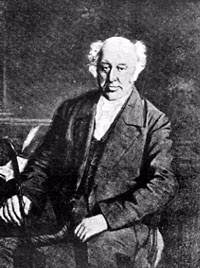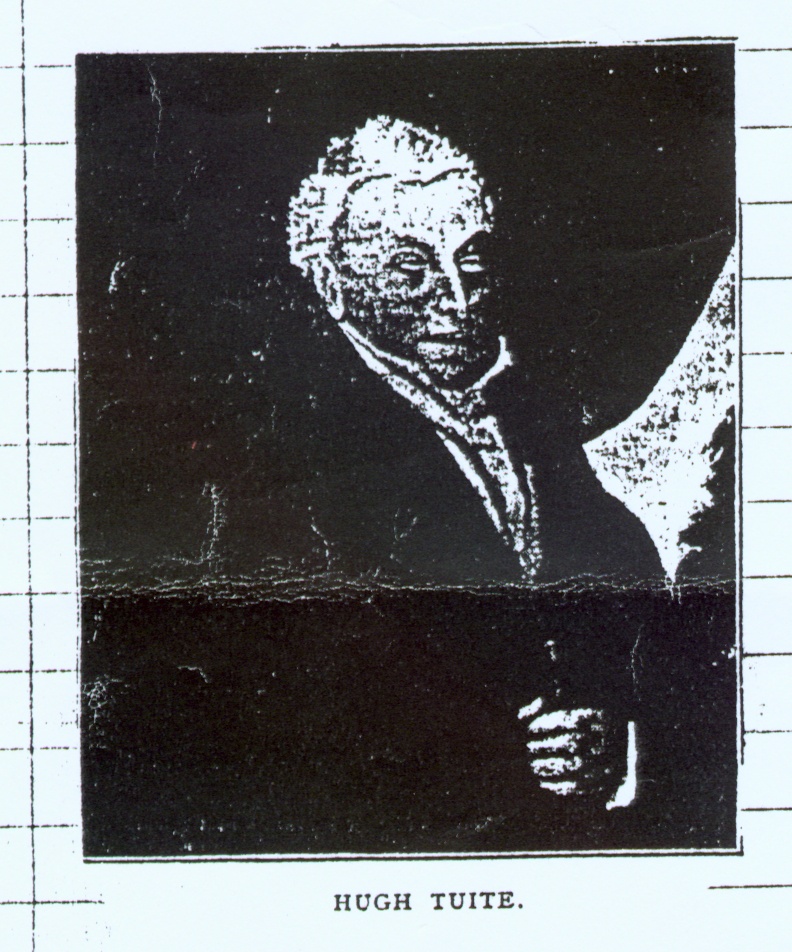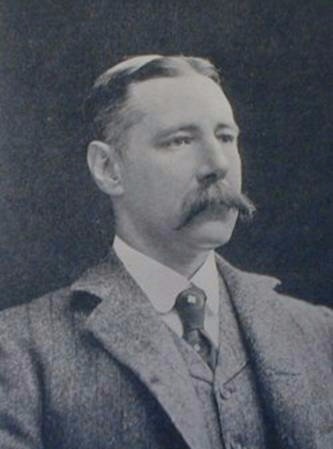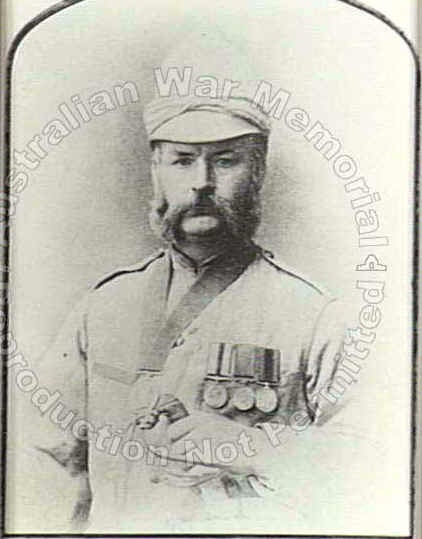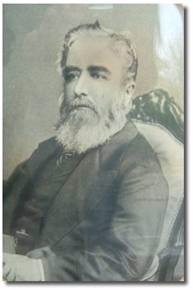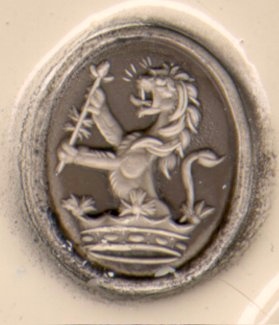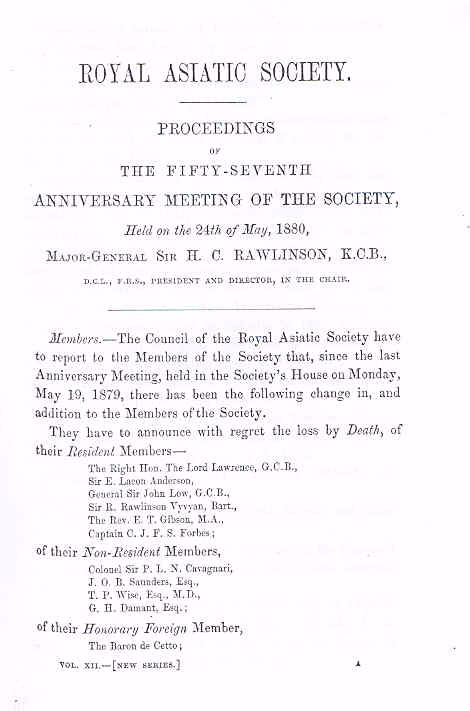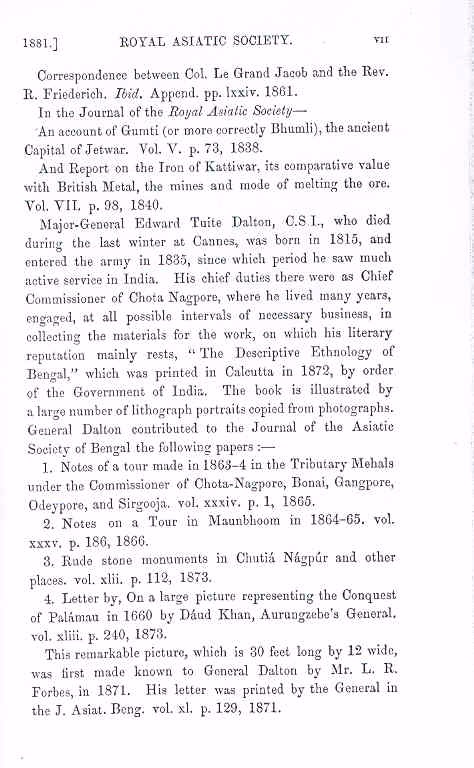TUITE, Hugh Morgan (1795-1868), of Sonna, co. Westmeath.
Hugh Morgan Tuite was born in 1795 and died in 1868.
Published in The History of Parliament: the House of
Commons 1820-1832, ed. D.R. Fisher, 2009
Available from Cambridge University Press
http://www.historyofparliamentonline.org/volume/1820-1832/member/tuite-hugh-1795-1868
Constituency
Dates
1826 - 1830
1841 - 1847
Family and Education
b. 1795, 2nd but 1st surv. s. of Capt. Hugh Tuite of Sonna and Sarah Elizabeth, da. of Lt.-Col. Daniel Chenevix of Ballycommon, King’s Co. educ. Christ Church, Oxf. 1814. m. (1) 6 Feb. 1826, Mary (d. 14 Mar. 1863), da. of Maurice O’Connor of Mount Pleasant, King’s Co., 1s. 1da.; (2) 8 Oct. 1863, Hester Maria, da. of John Hogan of Auburn, co. Westmeath, s.p. suc. fa. 1843. d. 15 Aug. 1868.
Offices Held
Sheriff, co. Westmeath 1822-3, co. Longford 1837-8.
Biography
Tuite, ‘the son of a gentleman of about £5,000 per annum’, was a permanent resident of Westmeath, where the local press commended his family for giving ‘perpetual employment to a number of our poor’ and spending ‘a splendid fortune’.1Following the death of one of the county’s sitting Members in 1824 he made a ‘limited canvass’ as a supporter of Catholic claims, but on finding ‘the strong interests combined’ against him quit the field, hinting that he intended to stand at the next general election.2 In 1826 he duly offered as a pro-Catholic in opposition to the dominant Protestant interests, stressing his independence from ‘any particular line of politics’, his belief that emancipation would restore ‘peace and good order’ and his wish to deliver the county ‘from the degradation of being considered a sort of family property, or hereditary borough’. He was actively assisted by the Catholic Association and after a ‘severe struggle’ returned in second place, amidst accusations of widespread electoral misconduct by his supporters.3
He informed the Commons, 14 Feb., that he would not defend his return against his beaten rival’s petition, but his associates successfully petitioned to be admitted as parties for his defence, 8 Mar. 1827. He was absent from the division on Catholic claims, 6 Mar., as he ‘could not vote, not having defended his election’.4 A commission of inquiry into his return was established, 3 May 1827, but it disintegrated the following year, whereupon a committee was appointed, 18 Apr., and decided in his favour, 28 Apr. 1828.5 In his first reported action in the House Tuite, who is not known to have spoken in debate in this period, voted for Catholic relief, 12 May 1828. He divided against restricting the circulation of Irish and Scottish small notes, 5 June 1828. He was a convenor for the meeting of the ‘friends of civil and religious liberty’ at the Rotunda, Dublin, 20 Jan., and of course voted for the Wellington ministry’s concession of emancipation, 6 Mar. 1829.6 He was granted three weeks’ leave on account of ill health, 12 Mar. 1830. He was in the minorities for O’Connell’s Irish vestries bill, 27 Apr., and repeal of the Irish coal duties, 13 May. He paired for the second reading of the Jewish emancipation bill, 17 May. He voted to reduce the grants for consular services, 11 June, and Nova Scotia, 14 June, and was in the minority of 30 against the administration of justice bill, 18 June 1830.
At the 1830 general election Tuite offered again, citing his avoidance of ‘all coalitions’ and opposition to ‘every measure tending to increased taxation’. Faced with alliance between his former opponents, and abused for not pledging his unqualified support to Daniel O’Connell*, he ‘apologized for voting for the emancipation bill, clogged as it was with the disfranchisement of the 40s. freeholders’, and explained that he had withdrawn his support from the vestries bill in order to please both Catholics and Protestants. After a warm contest, in which he was ‘rather remiss’ in his canvassing, he was defeated; the Westmeath Journal observed that he had ‘sailed into the emancipation bog [and] run on vestry sands’.7 At the 1831 general election he started as a supporter of the Grey ministry’s reform bill but withdrew after a brief canvass.8 It was erroneously reported in The Times, 4 July 1838, that he had been created a baronet. He sat for Westmeath as a Liberal, 1841-7.9 He died at Sonna in August 1868 and was succeeded by his only son Joseph (1828-1910).10
Ref Volumes: 1820-1832
Author: Philip Salmon
Notes
- 1.Brougham mss, Abercromby to Brougham, 12 July; Westmeath Jnl. 8 June 1826.
- 2.Westmeath Jnl. 26 Feb. 1824.
- 3.Dublin Evening Post, 8, 15, 20, 24, 29 June, 1 July 1826; Westmeath Jnl. 15 June; Add. 40334, f. 171.
- 4.The Times, 10 Mar. 1827.
- 5.CJ, lxxxii. 16, 168, 293, 429; lxxxiii. 244, 277.
- 6.Dublin Evening Post, 8 Jan. 1829.
- 7.Westmeath Jnl. 8, 15 July, 5, 12, 19, 26 Aug.; Dublin Evening Post, 29 July, 1 Aug. 1830.
- 8.Dublin Evening Post, 3 May 1831.
- 9.Dod’s Parl. Companion (1846), 241.
- 10.The Times, 19 Aug. 1868.
Related Resources
Sonna Harriers
“About 1802 the Sonna Harriers were started by Mr. Hugh Tuite (third son of Sir Henry), on leaving the army, shortly after the siege of Gibraltar, at which he served as a captain in the 39th regiment. He had originally joined the 14th Light Dragoons. The pack was made up of picked drafts from the best English kennels, including Mr. Coke’s*, the celebrated owner of Holkham, one of the finest seats in Norfork. Mr. Tuite was a sportsman of the true old type. Pea-green coat, with black collar, buff facings and vest, was presented only to a select band of followers, about twenty-five in all.
Mr Hugh Morgan Tuite, MP for Westmeath from 1826-1830 and again from 1842-1847 ucceeded his father and maintained the Sonna Harriers until the time of the Famine in the 1840’s.
With kennels at Coolnahay, where a stream ran through the yard, everything, including the horses and general turn out, was consistent with a smart establishment. The country hunted was all the best going in the country, stretching from Skeagh.
*Mr. William Coke instituted at his shooting parties the hats now called “billycock”, from his name Billy Coke.”
Records of Hunting in Westmeath
“Hill and Churchtown to Ledeston and from Mullingar to Bunbrusna; in fact, the circuit of Lough Owel and to Ballynacargy and south to Sonna. There were no hounds belonging to the northern part of Westmeath, but Mr. Clibbon kept a trencher-fed pack at Moate. There was racing as well as hunting in the year 1809: a four days’ meeting from 4th to 7th of April at Finea. This out-of-the-way little town lies partly in Cavan and partly in Westmeath, the river Inny being the boundary, spanned by the bridge famous in Irish history, when “Miles the Slasher” held it at the time of the battle of Granard.
The “Ballymacue Yeomen Stakes” was run at the above meeting, and Mr. Laghey was the fortunate yeoman who won it.
Then there was Hunters’ Plate of 30 sovs., run in three mile heats, and ridden by gentlemen. The horses were to have been hunted in Westmeath, Cavan, or Longford.
Mr. Shore’s mare “Plough-Boy” won, and was hard pressed by Mr. O’Farrell’s grey horse by “Kildare.”
Mr. Hugh Morgan Tuite, whose elder brother had died, was M.P. for the county from 1826 to 1830, and again 1842 to 1847, succeeded his father, and took great pains in keeping up the efficiency of the Sonnna hounds. He gave them up at the time of the Irish famine, and then it was that Mr. Henry Murray started his pack with five couple of the smallest of the Sonna hounds as a foundation. (Mr. Tuite had taken the pick of Sir R. Nagle’s harriers that were kept at Jamestown; Sir J. Strong, of Tynon, got the remainder of the pack.) Sir Richard Nagle had succeeded to Jamestown by marriage with the Geoghegan family; he was created a baronet in 1813; and only lived fourteen years to enjoy the honours of his title.”
Sir Hugh Morgan Tuite was considered a good land lord and was well respected in the area, a favourite saying in the locality was “always at home like Tuite of Sonna”.
Thomas Patrick Tuite born in the United States in 1849 and died on 1/21/1933. Thomas Tuite was a fenian who was one of the leaders of the fenian rebellion in Ireland in 1867. He had a grandson, Charles Tuite, who had two daughters, Margaret and Dodi. See “Tuites Romance”.
Hugh George Spencer Tuite
BORN 17th April, 1863, second son of the late Major-General Hugh Manley Tuite, R.A., and heir presumptive to his brother, Sir Morgan Harry Paulet Tuite, 11th Baronet, of Sonnagh, County Westmeath, Mr. Tuite is descended from a Norman family settled in Ireland as early as the twelfth century, the time of Strongbow, whose crest tells a tale of crusading ancestors. From 1882 to 1890 he held a commission in the Northumberland Fusiliers, seeing active service in the Hazara campaign in 1888, and receiving the Indian frontier medal, with clasp. While serving in India he began to write, his work was accepted by Mr. Rudyard Kipling, then editor of the Civil and Military Gazette, and he contributed a large number of stories, articles, and "turnovers" to the columns of that journal. In 1892 he saw an advertisement in Answers for an assistant editor on Messrs. Harmsworth's staff. In reply to that advertisement there were a thousand applications, but instead of writing, Mr. Tuite went over from Ireland and saw Mr. Harmsworth, now Lord Northcliffe. The latter he found no grave and reverend signior as he expected, but a young man, who looked about twenty years of age, though really some six years more. As a result of the personal application he was engaged upon Messrs. Harmsworth's literary staff, and he has been editor of the Scottish Weekly Record since its foundation. He is a contributor to numerous periodicals, including the London Daily Mail, Cassells' Magazine, and the London Magazine. In 1904 he published a novel, "The Heart of the Vicar," which, though woven round the problem as to whether a divorced person can conscientiously marry again, is a delightful story, of entirely healthy and engrossing interest; and in 1906, "Bob and the Dream Birds," a story for children. He has also written several plays. He is a Member of the Institute of Journalists and of the Incorporated Society of Authors, and is a Freemason. Mr. Tuite found time, while in Glasgow, to play the clarionet in the CecilianOrchestral Society and the Players' Orchestra; but since the autumn of 1908 has resided chiefly in London.
Mr. Tuite married, in 1893, Eva Geraldine, daughter of the late Mr. Peter Valentine Hatton, county Wicklow, and has four children. Mrs. Tuite has written several books on cookery, and contributes to various journals.
Freehold Land Value in the 1800’s
The vast majority of freeholds had a value of 40 shillings. As a rule of thumb, this value can be assumed in the following list, except where no landlord is specified, in which case a value of 10 pounds and upwards applies. Please note that this is a very general rule of thumb only.
Freeholders were allowed to vote in local elections. The Relief Act enabling Roman Catholics to enter Parliament and hold higher offices of state (better known as Catholic Emancipation) was passed on 13 April 1829. On the same day an Act raising the county franchises from 40 shillings to 10 pounds freehold was enacted, a "mischief-bill" in the words of Daniel O'Connell. Therefore the vast majority of people on this list were disenfranchised from 1829.
Name of Life or Lives, or other Tenure: The condition under which the freehold is granted (the duration of the freehold), normally the life of the freeholder, or a relative, or the landlord, or a combination of all or any of those. Sometimes a member of the British royalty is mentioned, or a foreign king or prince is specified, or a member of the clergy.
Landowners in Co. Westmeath, circa 1870’s
(Contributed by Jean Rice jeanrice@cet.com)
1. Henry Tuite, (a minor), address Sonna, Mullingar, owned 1,490 acres.
2. John Tuite, address Springfield, Mullingar, owned 178 acres (married Lucy Ann Salmon who gave birth to Mary Margaret Tuite in Springfield on July 18th 1872).
3. Joseph Tuite, address Sonna, Mullingar, owned 7,391 acres.
4. Thomas Tuite, address Toor, Ballynacargy, owned 1 acre.
Freeman's Journal — 24 July 1841
Freeman's Journal — 24 July 1841
Guide to the Irish Commoners
(Written expressly for the Freeman)
|
TUITE Hugh Morgan | Westmeath co. — a Reformer; first elected in 1826. |
Connaught Journal
Printed and Published
in Lower Cross-street by Barthw. O'FLAHERTY
Galway, Ireland
Thursday, March 5, 1840
Volume 89 Price 5D
Addresses to the Queen.-The County Meath, assembled on last Saturday, for the purpose of addressing the
Queen and Prince Albert on the happy event of
their marriage. The county of Westmeath met on Tuesday. The requisition to the High Sheriff was signed by the nobility and gentry without any party
distinction. The Earl of Longford and Sir
Montague CHAPMAN, Lord Kilmaine and Mr. TUITE, Sir R. LEVINGE and Mr. Gerald DEASE, cordially united in this well-timed expression of loyalty.
Property owners County Tipperary 1870
Sir Mark Tuite Ballymacur, Nenagh 89 acres.
County Carlow Landowners circa 1870’s
Per genealogy library reference book, the following individuals owned one acre or more of land in Co. Carlow, Ireland, in the latter part of the 1870s:
Patrick Tuite, address Kilcloney, owned 49 acres.
Nicholas Tuite MacCarthy
Called the Abbé de Lévignac, born in Dublin on 19 May, 1769; died at Annécy, Savoy, 3 May, 1833. He was the second son of Count Justin MacCarthy, by Mary Winefrid Tuite, daughter of Nicholas Tuite, Chamberlain to the King of Denmark. At the age of four he was taken by his parents to Toulouse, where, disgusted with English law as administered in Ireland, they took up their permanent abode. Later he was sent to the Collége du Plessis in Paris. At the age of fourteen he received tonsure at the seminary of St-Magloire. He had nearly completed his course of theological studies at the Sorbonne when the Revolution forced him to leave. He retired to Toulouse. His ordination to priesthood was postponed until his forty-fifth year (1814), partly owing to the Revolution, and partly to a weakness of the loins which rendered it impossible for him to stand for any considerable time. Having sufficiently recovered from this infirmity, he entered the seminary of Chambéry, in Savoy, in 1813, and was ordained to priesthood in June, 1814. Toulouse was the scene of his first missionary labours. In a short time he became a famous preacher. In 1817 he was offered the Bishopric of Montauban, which he refused. He entered the Society of Jesus in 1818, and made his simple vows two years later. He was reserved exclusively for preaching. So noted was his talent in this respect that he was appointed during his novitiate to preach the Advent Station before the Court of France. The fame of his preaching spread throughout the kingdom, and accordingly he was invited to preach in all the principal cities of the country, as well as in Switzerland. He was admitted to the solemn profession of the order in 1828. The Revolution of 1830 led him to retire to Savoy, whence he was summoned to Rome, arriving in October of the same year. While in Rome he preached every Sunday before the most distinguished personages there. After a short time, however, his health, never robust, became greatly impaired; but not even this lessened his spiritual zeal. On leaving Rome he settled in Turin, at a college of his order. At the request of the King of Sardinia-whose brother Charles Emmanuel was a novice in the Society of Jesus-the Abbé MacCarthyconducted a retreat for the Brigade of Savoy, and did much good amongst the military, his time being completely devoted to the pulpit and confessional. He preached the Lenten course of sermons at Annécy, but being soon afterwards taken ill, expired there, in the bishop's palace, and was buried in the cathedral. As a preacher, he was in eloquence inferior only to such men as Bossuet and Massillon; but whilst they spoke principally for a special class of hearers, the Abbé MacCarthy's sermons are for all countries and for all time, and are to be regarded even at the present day, for depth of thought, for piety, and for practical application, as among the best contributions to homiletic literature.
Deplace, Biographical Sketch prefixed to Sermons (Lyons, 1834); MAHONEY, Biographical Notice to tr. of Sermons (Dublin, 1848); Dictionary of National Biography (London, 1893). P.A. Beecher
Transcribed by Dennis McCarthy
The Landed Gentry, Page 705, Ireland, Tuite
TUITE OF KILLEEN AND CLOONE
ROBERT STRATFORD TUITE, of Killeen, co. Longford, and Cloone, co. Cavan. J.P. for co.Longford, late Major 4th Batt. Royal Irish Fusiliers, b. 27 July, 1852; m. 15 May 1888, Georgina Phelps, eldest surviving dau. of the late Major George Roche Smith, 2nd Queen’s Royals, and 99th Regt.., by Grace Elizabeth his wife, eld. dau. of Major Robert Hedges EyreMaunsell, 39th Regt., of Plassey, co. Limerick, and Beakstown, co. Tipperary, and has issue,
1. Thomas Mark Hardress Stratford, b. 17 April, 1891.
2. Norman Eric Maunsell Stratford, b. 25 April 1892.
3. Evelyn Morgan Aubrey Stratford, b. 1 Aug. 1894.
4. Maurice John Southwell Law, b. 15 Jan 1902.
1. Gladys Grace Dawson-Damer Stratford.
Lineage. –Sir Richard De Tuite accompanied the Earl of Pembroke into Ireland 1172, and was killed in Athlone 1211, while holding a Court. He erected the famous abbey of Lara, nearGranard, co. Longford, in 1205, long the burial place of the Princes of Annally, and where he himself was buried. Sir Richard left two sons,
1. Sir Richard de Tuite, surnamed The Black, Baron of Moycashell.
2. Maurice Tuite, ancestor of Tuite of Sonnagh (see Burke’s Peerage and Barondage).
A branch of the family of Tuite of Sonnagh, possessing lands in the cos. of Longford, Cavanand Meath, descends from Sir Edmund Tuite. Knt., m. Alice, dau. of James Fitzgerald, ofLaceagh, co. Westmeath , and had a son, Edward Tuite, of Tuitestown, co.Westmeath, b. 1612. High Sheriff 1642, who, while sheriff, raised the county against His Magisty’s Army, and was killed in a battle near Ticroghan; in consequence of which, his estates ofTuitestown, Ledwithstown, Carolstown, Coblestown, and others, became forfeited, and were granted to Philip, Lord Wharton, and were claimed by Thomas Tuite, son of Edward Tuite, in 1664, but the “Act of Explanation” of 1666 excluded the claims of Innocents (seeReport of Carte Papers, 1869, at the Bodleian Lib. Oxford).
Thomas Tuite, grandson of Edward Tuite, settled at Carragh, Granard, co. Longford, in 1700, and m. 1720, Kathleen, dau. of James Major, of Higginstown, in that co., and d. 1772, aged 92, leaving two sons, Francis; James, b. 1732; and one dau. surviving.
The elder son,
Francis Tuite, b. 1730; m. 1752, Rachel, dau. of Rev. Edward Groome, M.A., of Eyre Court, co. Galway, and d. 3 May. 1813, having by her (who d. July, 1799) had issue,
1. Thomas, his heir.
2. Edward, d. April, 1792.
The elder son,
Thomas Tuite, of Rockfield, Grandard, b. 10 April, 1756, was a very extensive land agent, and held, with other agencies, that of his kinsman, Sir Henry Tuite, 8th bart., of Sonagh. He m. 23 June, 1790, Mary, dau. of Edward Reid, J.P., of Galmoylestown, co. Meath, and by her (who d. 23 Aug. 1827) had issue,
1. Thomas, his heir.
2. Edward, d. 15 May, 1876.
1. Alice Pailes, d. 11 Aug. 1830.
2. Jane, d. June, 1831.
3. Matilda Maconchy, d. 1870.
4. Maria, d. 1868.
5. Rachel Groom, d. 4 July, 1822.
Mr. Tuite d. 26 June 1827, and was s. by his eldest son, Thomas Tuite, of Granard, co.Longford, b. 11 March, 1806; m. 10 Nov. 1842, Eleanor, dau. of Capt. Robert Stratford, ofAnnsgrove, co. Westmeath, and by her (who d. 25 Feb. 1901) had issue,
1. Thomas Groonie, b. 21 April, 1845; d. 11 July, 1858.
2. Robert Strattford, of Killeen and Cloone.
1. Mary, d. 29 Sept. 1843.
2. Annie Jane, d. urm. 31 March, 1888.
Mr. Thomas Tuite d. 29 Sept. 1893.
Seats – Killeen, Granard, co. Longford; and Cloone Gowna co. Cavan. Residence – 27, Herbert Place Dublin.
The Landed Gentry, Page 706, Ireland, Tuite
TUITE OF SONNA
Henry Maurice Tuite, of Sonna, co. Westmeath J.P., b. 15th Oct. 1856; s. his father 1910; m. 8 March 1886, Constance Edith, dau. of Henry Murry Campbell, of Halston, Westmeath.
Lineage – See Burke’s Peerage, Tuite, Bart. Hugh Morgan Tuite, M.P., D.L., of Sonna (who d. 16 Aug. 1868), by Mary his 1st wife (who d. 14 March, 1863), dau. of Maurice O’Connor, of Mount Pleasant, and grandson of Capt. Hugh Tuite, of Sonna. 4th son of Sir Henry Tuite; 6thbart., had issue, an only son.
Joseph Tuite, of Sonna, co. Westmeath, J.P. for that co., High Sheriff 1868, D.L. co. Longford, late Lieut. 15th Regt., b. 15 Oct 1828; m. 1st, 8 Jan. 1852, Ellen Mary, dau. of Rev. Charles FoxChawner, Rector of Bletchingley. She d. 2 Dec. 1863, leaving issue,
1. Henry Maurice, now of Sonna.
2. Mariaa Charlotte Mary, m. 1879, Brook Pakenham Bridges Taylor, a Gentleman Usher to H.M. the King.
He m. 2ndly, 4 June, 1868, Ellen, youngest dau. of James B. Boothby, of Twyford Abbey, and d. 21 Feb. 1910. She d.s.p. 26 April, 1898.
Arms – Quarterly arg. and gu. Crest – An angel vested arg., holding in her dexter hand a flaming sword ppr., the sinister resting on a shield of the arms. Motto – Alleluiah.
Seat – Sonna, Westmeath.
Sir Henry 8th bart was a patron of the artist Francis Nicholson OWS (1753-1844) an English landscape painter who is thought to have visited Ireland in the early 1800s at the behest of his Irish patrons.
Boothby, Robert Tuite, Sir
Child 1: Boothby, Robert John Graham, MP, Lord
Kilrush Union Minute Books 1849
Meeting held on Saturday, 15th day of December, 1849
The following Report was read from the medical officer for Moyarta and KilballyowenDistrict Viz, I merely gave a sketch of four families who have laboured under severe Illness such as fever & diarhia omitting a greater number of cases labouring under debility produced by extreme privations for the last forthnight. I fear that any succour now produced will not prevent disastrous consequences. The very hearts and nerve of even the able-bodied paupers is nearly paralysed, through actual dread of being exposed to the heart rending sights they are now accustomed to, what can public officers do, who are connected with the paupers on Out Door Relief, truly they cannot be responsible for the lives of so many unfortunate human beings placed under their charge when the common scanty supply of meal hitherto afforded is now withheld for the last forthnight, and that draw back of food will tell frightfully in a short time even on the stalwart Labourer, not to mention, the delicate male and female children, under their charge. Turnip tops and the scavenging of the fields, for small turnips are now exhausted and winter cold will finish the fare for the Poor, having described to you the state of sick poor, & the poor in general, things would have been worse were it not for a few bags of meal obtained on the credit of the Relieving officer & distributed. Those few bags of meal were distributed to the worse cases, I could find, having travelled in company with Mr McInerney Relief Officer through the Parish, anything I could add to this would be only making bad worse, the same state of things are to be expected and are realized in Moyarta District
(Signed)
Jeremiah Tuite, M.D.
Father Hore's Emigrants From County Wicklow Ireland to the USA
Sourced from the book "A Farewell to Famine" by Jim Rees
In 1850, and ageing priest called Father Hore led a group of over 1000 people from their homes in County Wicklow and Wexford, to begin new lives in the American mid-west.
This was no flight from famine but an attempt to organize and establish an Irish Catholic Colony in Little Rock Arkansas. But the group broke into six groups, settling into such diverse places asNew Orleans, Arkansas, Texas, Missouri and Iowa, where some established a town called Wexford.
Members of the group were responsible for making their own way from their homes in Irelandto Liverpool where they were to set sail. bound for New Orleans. The three ships Father Horechartered were ordinary vessels in the immigration trade, carrying goods east and humans west. Exactly when Father Hore embarked with his group is difficult to say but they arrived in America in 1850
The List
The following is a list of passengers on board the TICONDERONGA the LOODIANAH and the CHASCA. Unlike the Fitzwilliam Tenants list which was compiled on the estate, the Hore list was compiled only from these passenger lists.
While all of the group were accommodated on one or another of these vessels, there were also passengers on them that were not part of Father Hore's group. A lot Germans and Dutch went to the US through Liverpool, having sailed from the Hook of Holland to the east coast of England and then crossing to Liverpool.
Many of the passengers on the TICONDEROGA and possibly the other two travelled on multiple contract tickets. On ticket No.22 code 16 fourteen passengers were named The total cost of the ticket was 75 pound or five pound each.
The location, where shown, indicates the final destination of that passenger in the USA.
SURNAME, FIRST NAME, AGE, SHIP, LOCATION
TUITE Thomas 30 Ticonderonga
Regimental Sergeant-Major of the NSW infantry contingent to the Sudan, 1885. Prior to his service in the Sudan, Tuite had served in the New Zealand wars and Afghanistan. On the contingent's return to Sydney, Tuite was presented with a silver tea and coffee service by the mayor of Sydney because he "had been the most efficient man in the service." part of this silver set is displayed in the Australian War Memorial.
http://www.diggerhistory.info/pages-conflicts-periods/other/sudan.htm
Colonel Edward Tuite Dalton
Soldier - Anthropologist
1815 - 1880
http://www.swan.ac.uk/visualanthropology/projects/003_Dalton/
Mother: Frances Tuite of Newcastle House Oldcastle, Co Meath. Newcastle House in Oldcastle Co Meath is close to the Fennor estate and Baltrasna House and Loughcrew churchyard.
Father: Sir John A Stevenson: 1760-1833 Director of Music Trinity Dublin. Composed lyrics for Thomas Moore's Irish Melodies.
| Obituary: General E.T. Dalton, C.S.I. Proceedings of the Royal geographical Society and Monthly Record of Geography, Volume 3, Issue 2 (Feb., 1881), 109. General E.T. Dalton, C.S.I. – The death is announced of Major-General Edward Tuite Dalton, C.S.I., who entered the army in 1835, and took part in expeditions against the frontier tribes of Assam in 1839-40 and in 1842. When two French missionaries, M.M. Kirk and Bourry, had been murdered on the Tibetan frontier by a Mishmi chief, General Dalton received much praise for his skill in organising the expedition which captured the murderer. Our associate died at Cannes, on December 30th, In the sixty-fifth year of his age. Major-General Edward Tuite Dalton C.S.I. Royal Asiatic Society: Proceedings of the fifty-seventh anniversary meeting of the Society, 24th May 1881, P vii. |
